Best balance bikes 2025: the perfect launchpad to success on two wheels
One of the best balance bikes is a fantastic way to introduce your little ones to the joys of cycling. We explain how to choose one and hand-pick our favourites
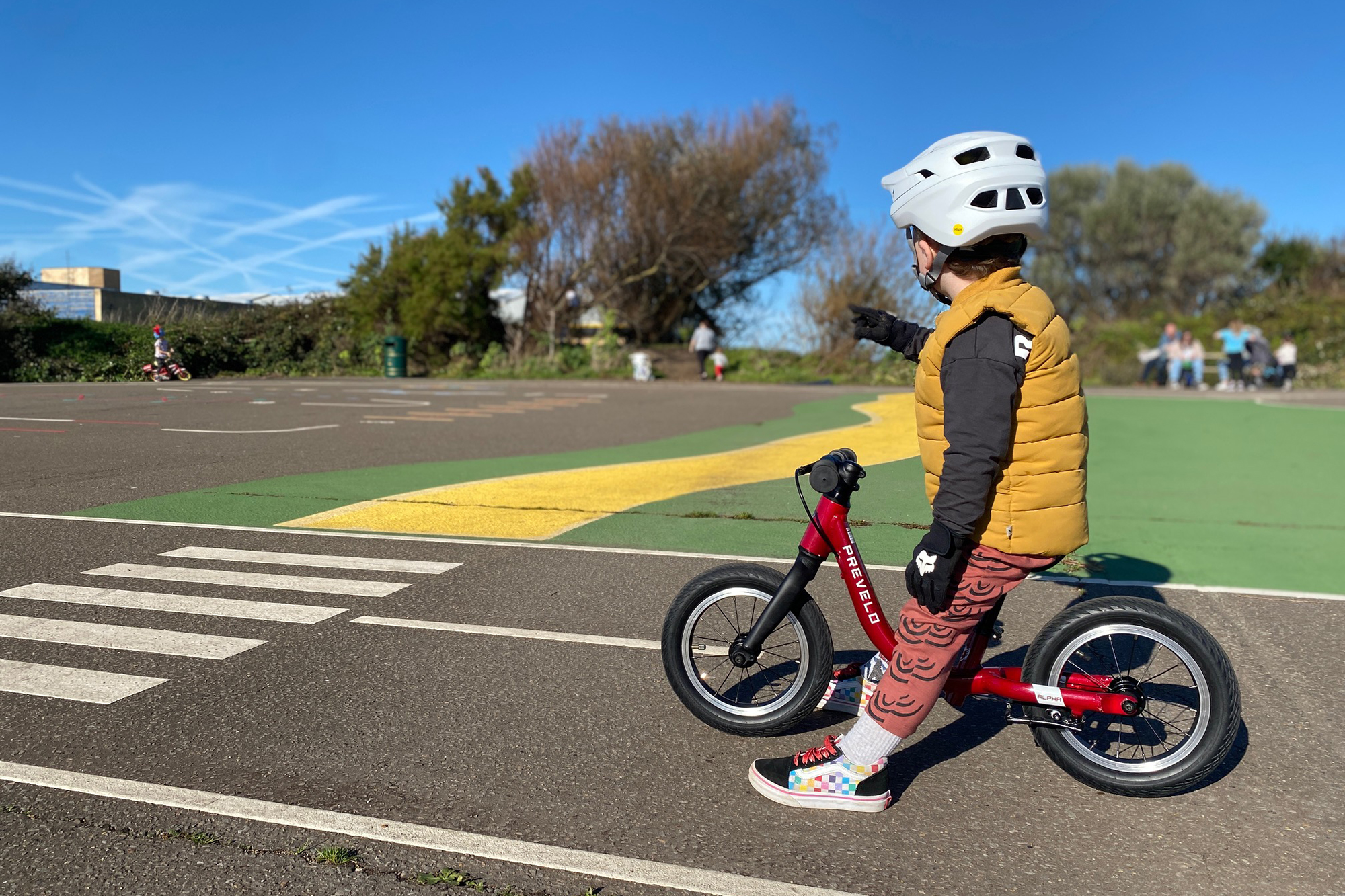
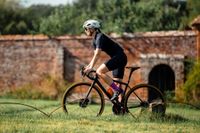
Matt Ischt-Barnard
With no cranks or pedals, the best balance bikes are the first step to life on two wheels for the smallest of riders.
But rather than simply removing these parts from a regular kid's bike, the best balance bikes will be precisely designed and engineered to create the perfect foundation for learning the key skill of cycling, balancing on two wheels.
Like all the best kids' bikes, the perfect balance bike will be lightweight and carefully adapted to suit very small hands and bodies, giving them the confidence of gliding and controlled stopping. Once they have nailed those aspects, the introduction of pedalling is, quite simply, child's play!
With kids of our own, we've got plenty of willing testers to see how they get on with a range of the best balance bikes. Of course, they need a helping hand from mum and dad to write the reviews, but that's what we're good at.
In this guide, we provide a wealth of information on why balance bikes are the ideal starting point for a child's cycling experience, and some hints and tips on how to find the perfect set of wheels for little legs. Alongside this, we discussed our top-rated bikes, the Hornit Airo tops the class with a complete 5-star honour, high-quality design and features.
Maybe your son or daughter isn't ready yet for a bike, in which case they might still need one of the best Kids' helmets to ride along with you in one of the best child bike seats.
Quick List
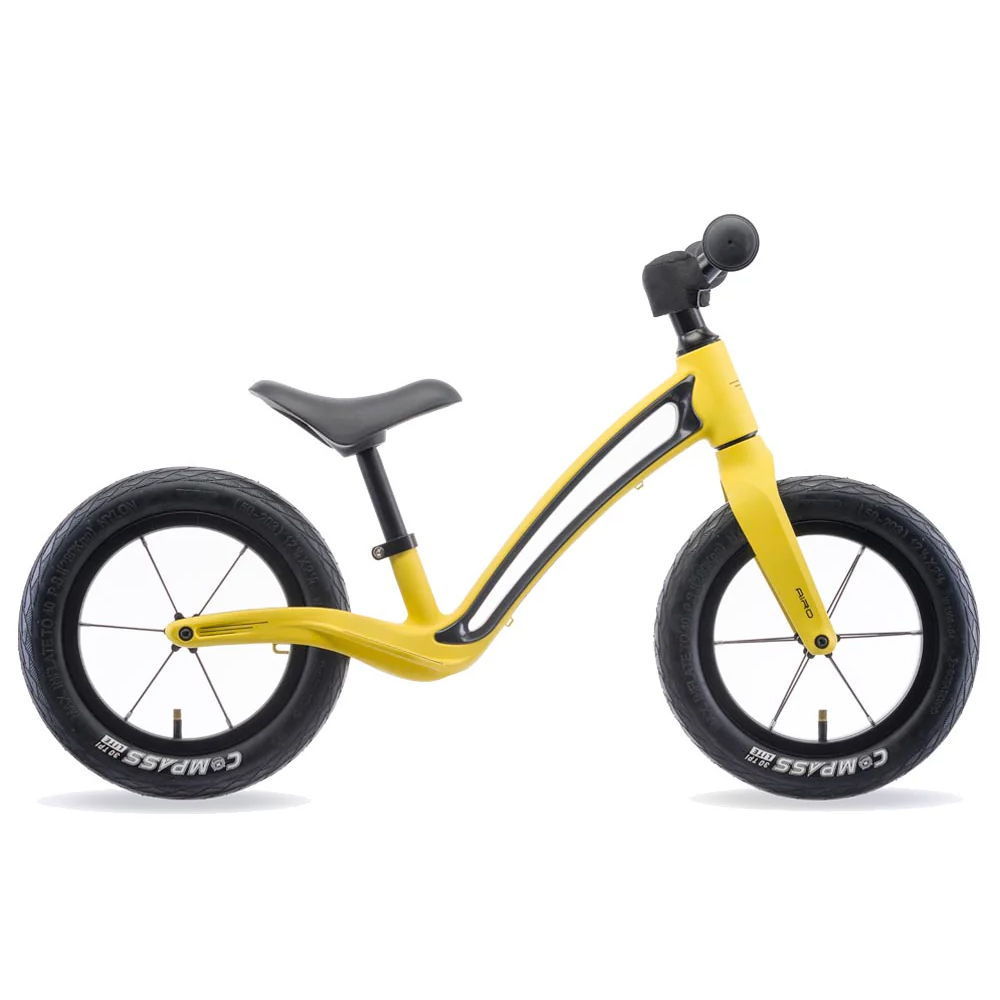
Light, comfortable and its radical looks were a big hit with our short-legged tester. The Hornit Airo also offers incredible value for money, offering high-end balance bike features at 'toy' bike prices.
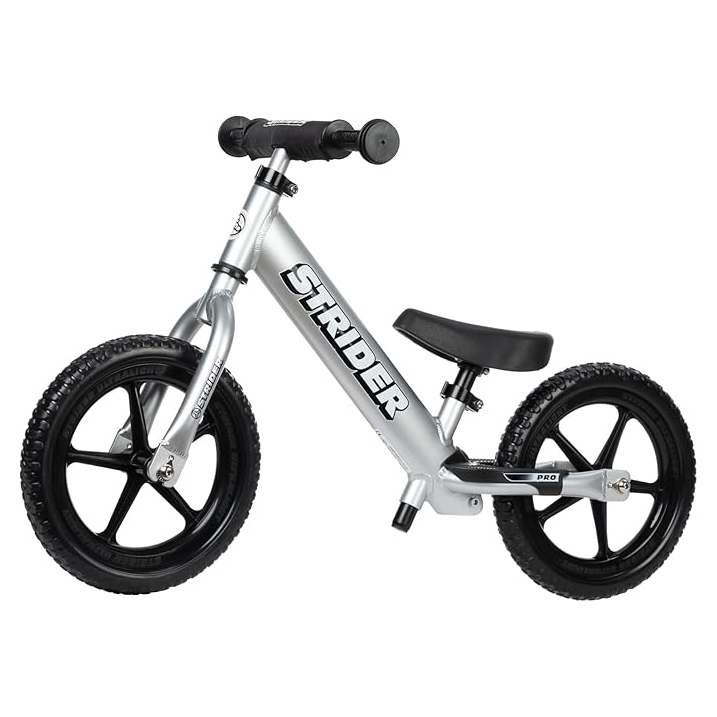
While it is no match for the Hornit, the Strider offers decent all-round value and simplicity. Its light, offers tons of adjustment and the guarantee of no early ride ending punctures thanks to the EVA polymer tyres.
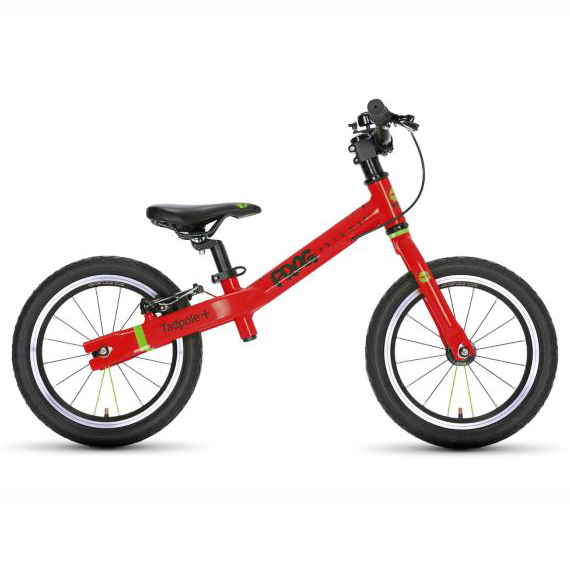
Believe it or not, bigger wheeled balance bikes are still few and far between. The Frog Tadpole fills that void offering taller kids not ready for pedals the opportunity to continue progressing.
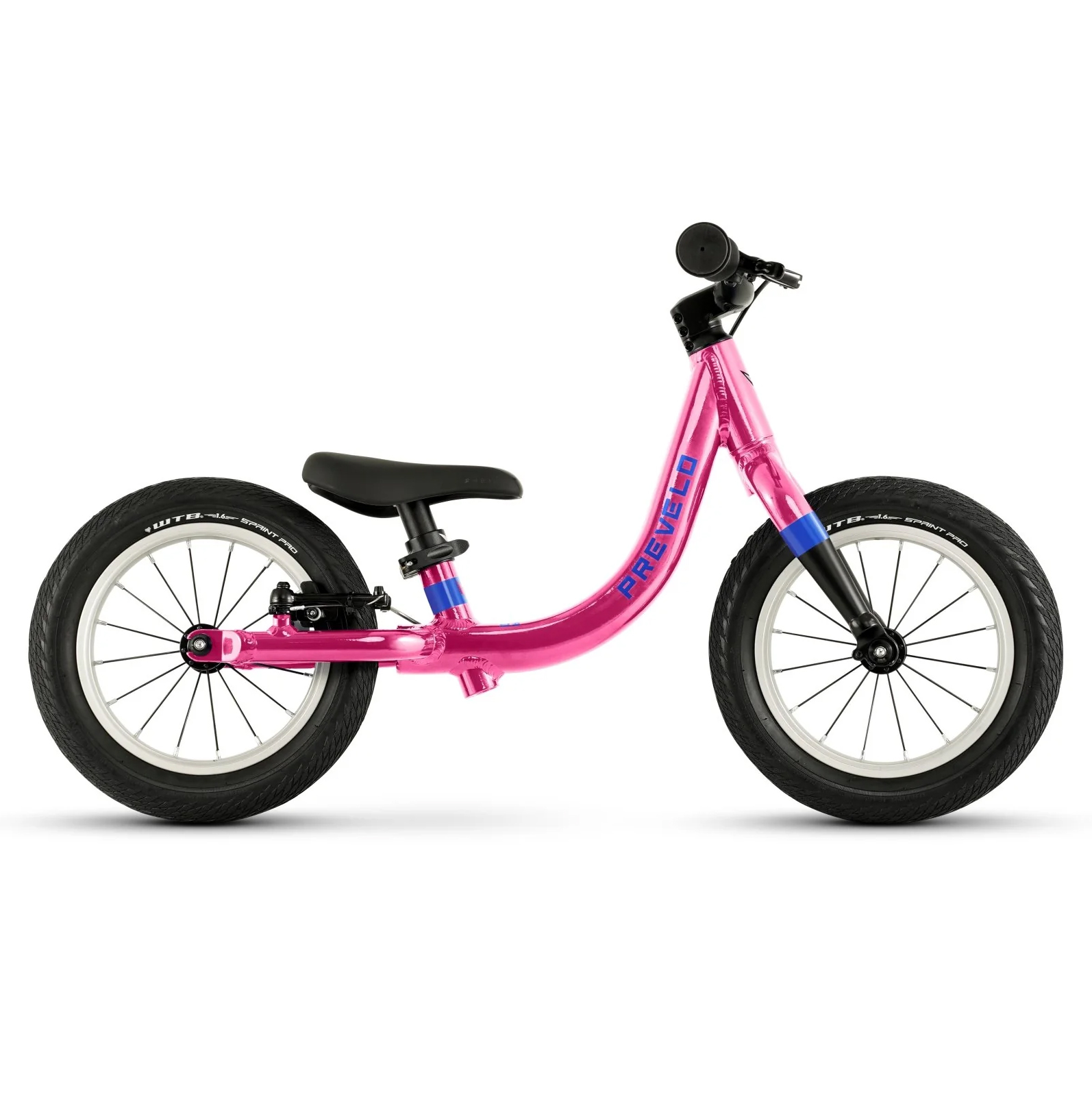
Prevelo set out with a clear intent with the Alpha Zero, and it was clear their research and development had a significant impact on my son's riding, giving him enormous confidence and control.
Best balance bikes: all tested by kids' and words from Mum and Dad
Best overall balance bike
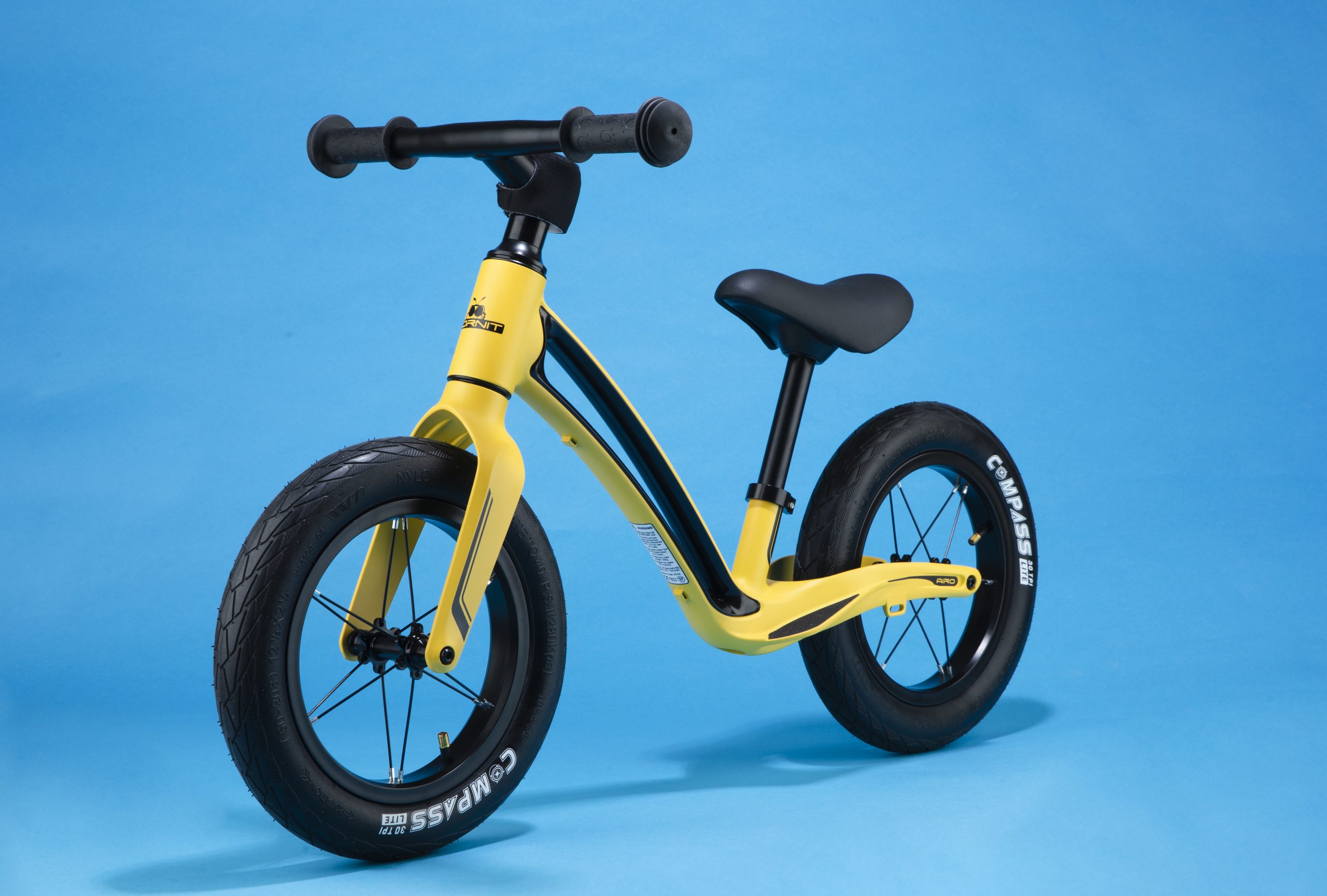
Wide tyres make for a smooth ride with the Hornit Airo
Specifications
Reasons to buy
Reasons to avoid
This wasn't Mia's first balance bike test; like so many, Mia had been building her skills and preparing for a bigger bike, but wasn't quite ready for pedals. So, the Hornit Airo represented the next step, putting her skills to the test.
It passed the first test with flying colours, the bright yellow, shiny finish really made her light up, which is also hurdle number two, actually getting your son or daughter to want to ride a bike in the first place.
The big challenge was that Mia wanted to go a bit further and faster, and her old bike was holding her back. Several features on the Hornit made all this possible. The first of these improvements was its overall weight of 2.9kg/6.5lbs, combined with pneumatic tyres that made it roll much easier than her old plastic wheels. The reduction in weight and rolling resistance made it visibly easier for her to handle.
Similar to other balance bikes, the paint chipped easily, and the foot plate could have been larger. However, overall, the Hornit is very high quality, and given that so many still don't come with foot plates and nice finishes, it's not really a complaint. Especially as the users rarely care and will chuck it down to pick a flower or stroke a dog at the drop of a hat, regardless of what bike it is.
Given that Hornit have built a reputation for offering exceptional value and quality bikes, this is a bike you might want to look after as a hand-me-down or to keep its resale value.
Read our full Hornit Airo balance bike review
Best value balance bike
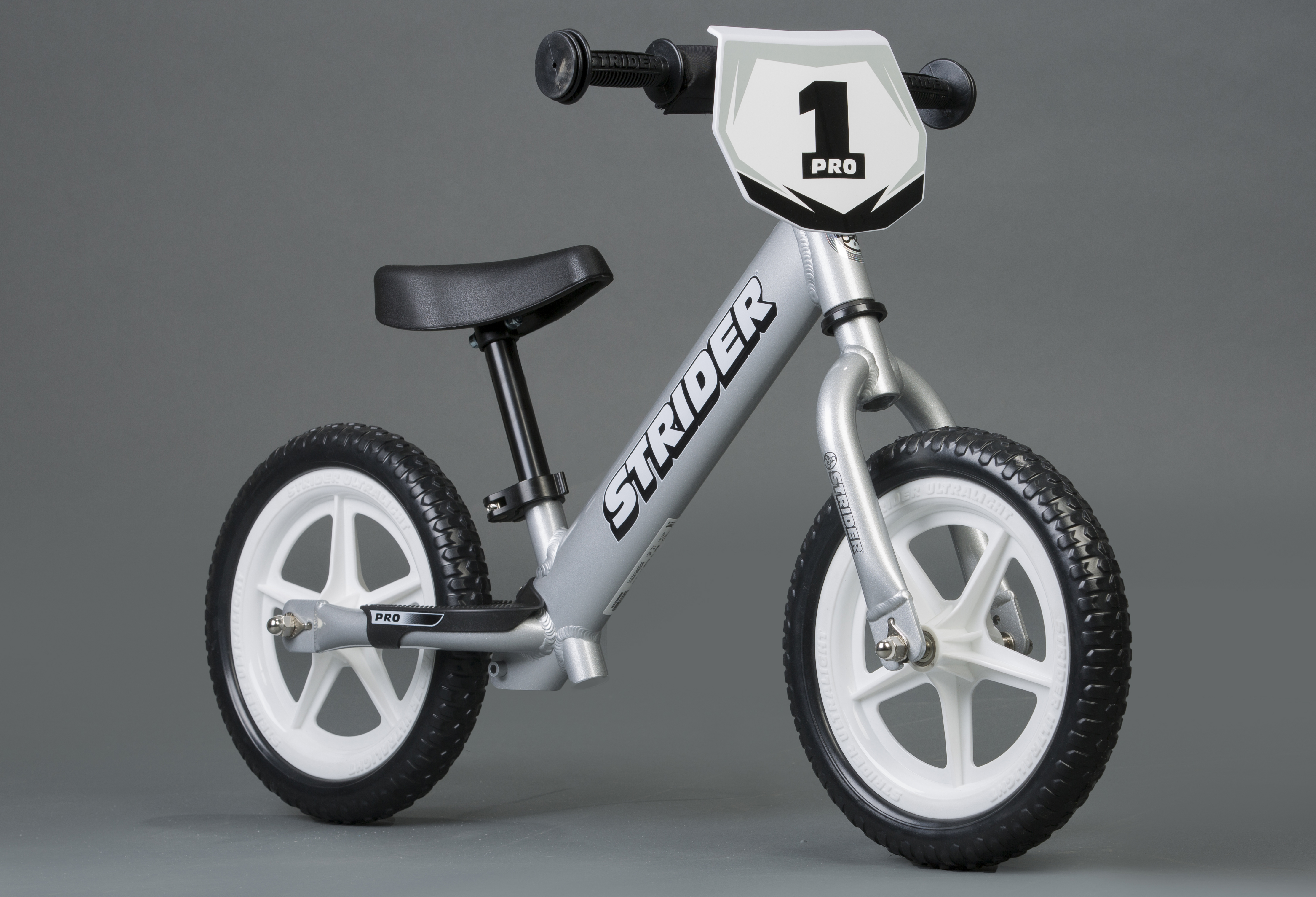
The Strider Sport is lightweight with puncture-proof ties
Specifications
Reasons to buy
Reasons to avoid
Transitioning to a bike without stabilisers can be really demanding for a child. I remember my first experience vividly, and now I wasn't able to balance, pedal, control and stop the bike all at once, ending my first ride rather swiftly at the first curb that came into view.
Like anything, isolating skills and focusing on one thing at a time can have a profound effect on your interest or enjoyment in something, and that's why balance bikes are so amazing for inspiring kids to ride bikes.
The Strider 12 Pro is the ideal learner bike, firstly due to its super low weight. At 2.5kg, it's light enough for even a small one to pick up after multiple topples and drops. I've noticed that with my other children, if the bike is too heavy, they lose interest pretty quickly. This low weight also doesn't seem to affect quality, either, given it's also reasonably low cost.
All in all, thanks to the solid tyres, the Strider is easy to maintain and build straight out of the box. The build took just a few minutes, which is crucial if it's given as a present. The best part is that we received the 12 Pro just as my daughter was learning to use it, which meant spending a fair few days bent over running her around on it. However, it would go on to last at least two years.
Read our full Strider 12 Pro Balance Bike review
Best big wheel balance bike
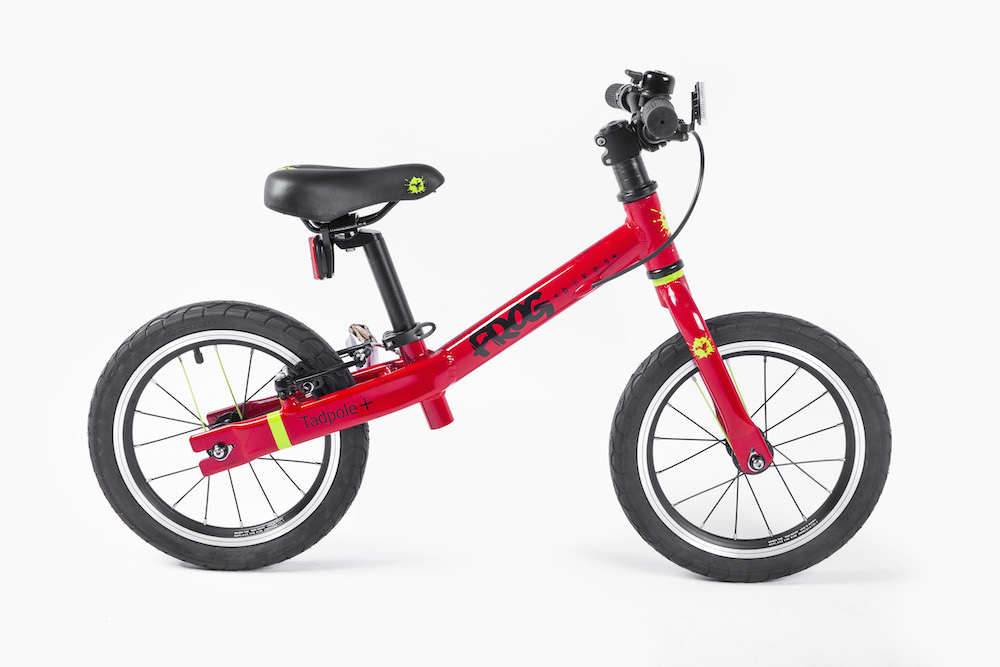
There are three sizes of the Tadpole to suit kids from one to four
Specifications
Reasons to buy
Reasons to avoid
Frog bikes Tadpole is now available in three sizes, which for a balance bike is pretty rare. It's often a single frame and wheel size, so you have to make it work. With the Tadpole Mini and the Plus that my three-year-old and I put to the test, you can now start kids earlier and not feel pressured to get them on to pedals if they aren't ready.
Having spent 6 months on an Isla Rothan, the concept of balance bikes was not new to my three-year-old, but she was starting to outgrow it. Given she had only really had six months on the Isla, she also wasn't ready for a pedal bike, which made the slightly bike-wheeled version of the Tadpole ideal. The Tadpole features a 14" wheel compared to the usual 12" wheel found on a large majority of balance bikes. While the frame wasn't necessarily any bigger than her Isla or the standard Tadpole, the extra height and diameter of the wheels make it feel bigger and more in proportion.
Where the Tadpole clearly differs from other high-end offerings, such as Early Rider and the Isla, we had previously discussed the component selection. Although it wasn't cheap and some consideration was given to ensure suitability, it was more affordable to keep the Frog competitive.
Read our full Frog Tadpole Plus balance bike review
Best confidence building balance bike
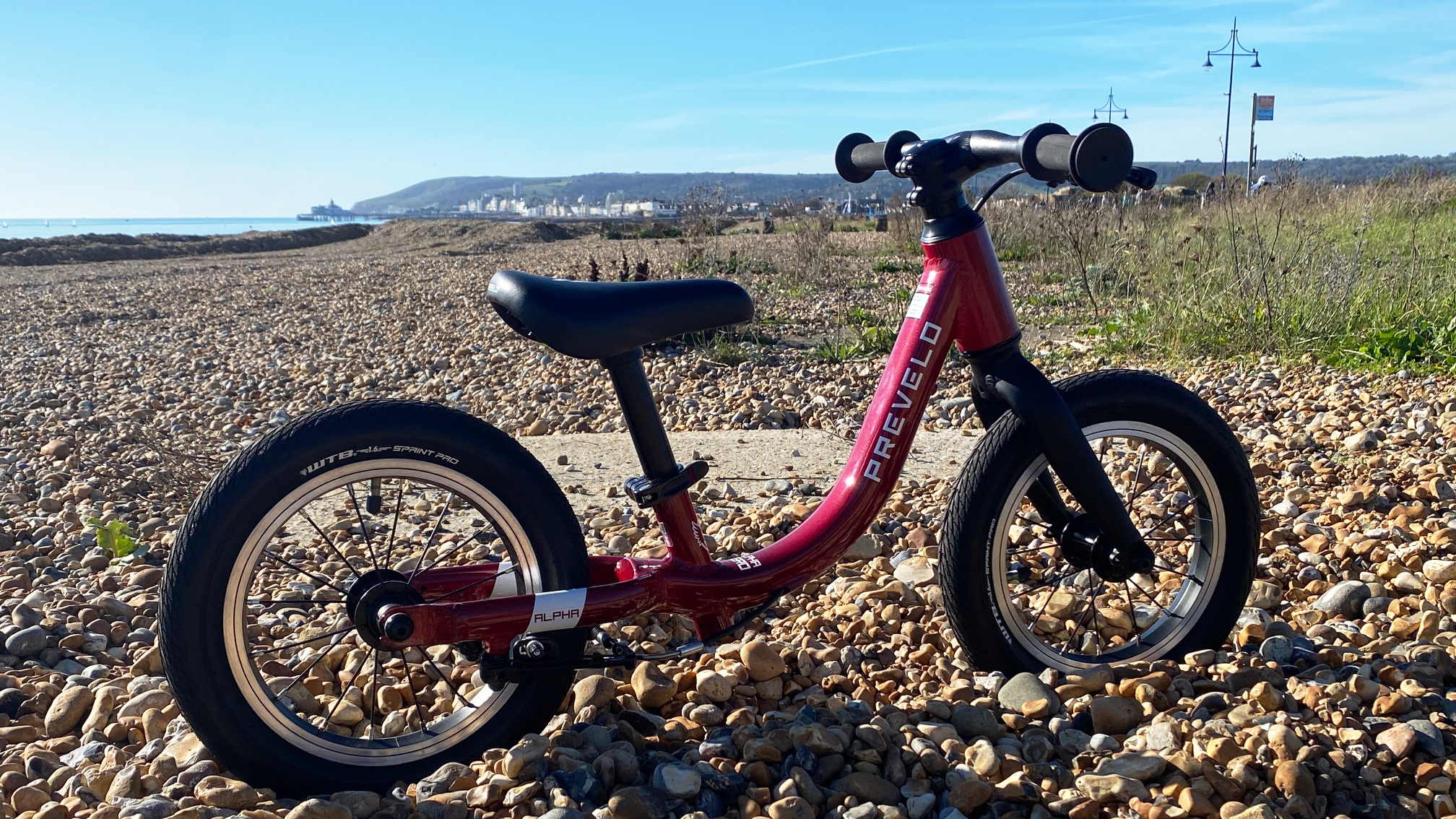
Specifications
Reasons to buy
Reasons to avoid
Prevelo has approached the balance bike very differently from others on this page. Its low bottom bracket, tall stack, steep seat angle and slacker head angle are designed to help kids feel more grounded, with a lower centre of gravity. Ultimately, it should help to increase young riders' stability and give them back some control. The presence of a rear brake and chunky pneumatic rubber tyres further supports this.
The Alpha Zero should support kids from aged 1 ½ years and up, with inseams from 30cm/12.5” to 42cm/16.5”. My three-year-old, who was very much ready for a pedal bike at the time of testing, was 105cm/41” with an inseam of 40cm/16” and was at the absolute limit of the Prevelo's extension.
My one big observation during my son's time with the Prevelo was just how much confidence he gained, notably as his speed increased and on tighter corners at our local pump track. He was a proficient balance biker before taking on the Alpha Zero, so much so, I was confident he was ready for a pedal bike, but diligently awaited to see if Santa would bring him one.
His balance and control really took on another level while using the Prevelo, and watching him carve the bike along the seafront like a skier is really a joy to watch. Which led me to believe he was really starting to get a grasp of how to handle a bike, thanks in part to the Prevelo's unique approach to balance bikes. This went hand-in-hand with him certainly feeling safer thanks to the rear brake, which his balance bike did not have. It is hard to deduce how much he was using it or how he was using it, but he was certainly pulling the lever to stop and in a corner to help modulate his speed.
The Prevelo Alpha Zero is one for enthusiast parents who want to pass on their love of bikes to their kids. Firstly, while it's not the most expensive, it occupies an awkward middle ground in terms of value. You need to understand what it can offer your kids outside of the specs and price.
Read Matt's full Prevelo Alpha Zero Balance Bike review.
Specification overview
Model | Age range | Bike weight (claimed) | Brakes |
Strider Bikes Sport | 1.5 - 5 years | 3.0kg/6.6lbs | No |
Hornit Airo | 1.5 - 5 years | 2.9kg/6.3lbs | No |
Frog Tadpole | 2 - 3 years | 4.1kg/9.1lbs | Rear |
Prevelo Alpha Zero | 1.5 - 4 years | 3.5 kg/7.5 lbs | Rear |
How we test the best balance bikes
Testing the best balance bikes and kids' bikes is a little different from our usual testing here at Cycling Weekly. Normally, it would be all about putting in the miles, discussing our many years of experience, and how our expertise offers us a unique perspective on the latest and greatest bicycle tech.
However, with the best balance bikes testing, we aren't the ones putting in the miles. That's down to the willing children and parents of the Cycling Weekly team and contributors, of course.
It gives us a chance to step back and just observe. See how our kids interact with different products and bikes. Then, it's up to the mums and dads to do what we do best: get it all written down.
We are, of course, asking our mini me's for their feedback, but you know what they say: never work with kids and animals. However, if we stuck to that hard and fast rule, we fear many of the CW team wouldn't have jobs!
So, what are we observing in our kids riding when testing the best balance bikes?
The most important thing of all is control. Most of the time, a balance bike is a first bike, so we are looking for how they can isolate skills like balance, stopping and turning and how that progresses with the bike.
Of course, we will also provide you with in-depth knowledge of all the bikes and offer a detailed, insightful analysis of the pros and cons of each one.
What are the benefits of a balance bike?
As the name suggests, a balance bike teaches your child a very crucial skill: balance. Learned early, this can have a notable impact on their confidence when it comes to cycling unsupported. Not only this, but a balance bike will also teach your child to control the movement of the bike with their body weight and how to steer.
While a child learning to pedal using training wheels might find the transition to balancing, steering, and pedalling all at once a little overwhelming, a child who has graduated from a balance bike will mainly just be adding pedalling to their existing skillset.
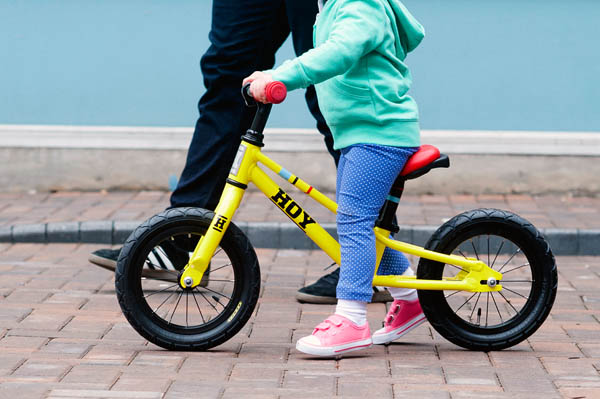
Hoy Bikes Kids Range for Evans Cycles. Photo By Stephen Hughes
What’s wrong with training wheels?
Training wheels, also called stabilisers, have been used for decades – and they worked for most of us in our early years (as far as we can remember…).
However, they’ve got their shortcomings. When we caught up with Isla Rowntree, founder of Islabikes, she summed it up pretty nicely: “[Training wheels] are not actually a great way to learn to ride. A bicycle steers by leaning; you lean it to the right, and the handlebars fall to the right, you lean it to the left, and they fall to the left.
"Training wheels hold the bike in a rigid, upright position – so when a child learns to steer with training wheels on the bike, they’re actually learning to steer a tricycle.
“Instead of learning to steer by leaning, they learn to steer by turning the handlebars and pushing their body weight away from the bike to stop it from toppling over. When they come to ride without the training wheels, they’ve then got to un-learn what they’ve been doing and learn something different.”
Check out our piece comparing balance bikes vs stabilisers for more. Plus, we've got advice on how to teach your child to ride a bike in 45 minutes.
Balance bikes and age ranges
Children can start riding balance bikes when they’re around 18-months to two years old, and little ones up to around the age of five enjoy them. In most cases, children will move on to a bike with pedals at around the age of four. There isn’t a top-end restriction on age, though, and you can even get balance bikes for adults.
It’s important to remember that balance bikes need to be the correct size for their rider: bike fit is just as important for kids as it is for adults. Of course, children grow quickly between the ages of two and five, so ideally you’ll want to select a bike that is adjustable.
How to choose the best balance bike

There are some amazing looking balance bikes out there. Some come with plastic add-ons that turn them into everything from motorbikes to shopper bikes (no prizes for guessing the gender suggestions coming up on shopping filters, there).
Colours and graphics that your child likes are undeniably important, but there are other features to consider first:
Weight of balance bikes
You may snigger that we're talking about weight on a children's product, but when it comes to bikes for little ones, the number that the scales record is incredibly important. Heavier models might come in at around 11lbs/5kg, whilst those designed with an eye on the scales sit closer to 6.8lbs/3kg. Though that might not sound like a huge difference to an adult, it’s a huge percentage of a child’s weight.
The lighter the bike, the easier it will be for your learning toddler to get it moving, and to handle it around the twists and turns in the park – especially if there’s the odd little incline.
Fit of balance bikes
Above all else, the bike needs to fit to be comfortable. Balance bikes at the smallest end of the scale can have 10-inch wheels, and at the largest end, you’re usually looking at 20-inch wheels.
At its lowest point, the saddle should measure one inch lower than your child’s inseam measurement. When sat on the saddle, your child should be able to put both feet flat on the ground, with a slight bend at the knee.
The bend in the knee might look odd at first, but it means that when they get going and extend their legs in front of them, they’ll still be able to comfortably reach the ground and take big, swooping and effective strides.
Adjustability of balance bikes
It’s understandable that you want your child’s balance bike to last as long as they want to enjoy it – typically two to three years. Look for a bike with an adjustable saddle height that offers a good range. Some versions also have adjustable handlebar heights, offering an even more tailored fit.
Should balance bikes have brakes?
A balance bike doesn’t have to have a brake – little feet will suffice. However, having one (usually at the rear) can add confidence. Not only that, it also gives your child one more skill which they can apply when they start to pedal. A quality balance bike will have a brake lever that’s easy for a small hand to operate.
The tyres on balance bikes
There are two common options here: EVA foam or rubber tyres with an inner tube, just like those on adult bikes. EVA foam tyres are usually lighter and puncture-proof – but they don’t provide quite the same traction as a rubber tire which will feel nicer and allow for use on different surfaces such as grass. It’s generally considered that EVA foam tyres will suit smaller riders who will stick to paved surfaces, but they’ll eventually grow out of them.
Saddle comfort on balance bikes
It’s ok: we’re not going to start advocating chamois shorts for five-year-olds. But it’s worth knowing that the ideal balance bike saddle isn’t necessarily the same as a pedal bike saddle. The body resting on it will be putting quite a lot of weight through the centre of the saddle, so these are ideally shaped in a ‘scoop’ shape. However, your child probably won’t be out for three-hour jaunts like many parents – so don’t panic too much about this.
Check if you’re going to need to build the balance bike!
Not all balance bikes are created equal when it comes to build quality. Ideally, you want one that is easy to assemble and comes with clear instructions. Some might require specific tools, so enquire if it’s not obvious or stated that they’re provided.
Frequently asked questions about balance bikes
How much do people spend on balance bikes?
Just like adult bikes, children’s balance bikes vary dramatically in cost. The good news is we’re talking hundreds and not thousands. The cheapest balance bikes will be around $50, but you can spend up to $200.
The temptation to spend less rather than more is understandable if you’re worried about splashing out on an item that could end up gathering dust. However, it’s really worth remembering that the likelihood of this happening is slashed if the bike is fun to ride.
At the pricier end of the scale, bikes will be lighter, more durable, and will have components (grips and saddles, for example) that are better designed for little bodies. We’re not suggesting that you have to buy a model with all the bells and whistles, but spending around $100 is a good idea.
What is the disadvantage of a balance bike?
Honestly, there are very few. The biggest issue is the limited number of options available that can be converted into a pedal bike. You may occasionally see people who choose to remove the crank and then refit it when their child is ready for them. It basically means a balance bike will rarely grow with your child much, and you will need to consider one of the best kids' bikes once they are ready to progress. This does give balance bikes quite a short window of use, given how quickly kids can grow at these ages.
It is undoubtedly worth considering purchasing second-hand for this reason or investing in a slightly higher quality or more expensive branded model, as they tend to hold their value very well.
The latest race content, interviews, features, reviews and expert buying guides, direct to your inbox!
Michelle Arthurs-Brennan the Editor of Cycling Weekly website. An NCTJ qualified traditional journalist by trade, Michelle began her career working for local newspapers. She's worked within the cycling industry since 2012, and joined the Cycling Weekly team in 2017, having previously been Editor at Total Women's Cycling. Prior to welcoming her first daughter in 2022, Michelle raced on the road, track, and in time trials, and still rides as much as she can - albeit a fair proportion indoors, for now.
Michelle is on maternity leave from April 2025 until spring 2026.
- Matt Ischt-BarnardEcomm and Tech Writer
